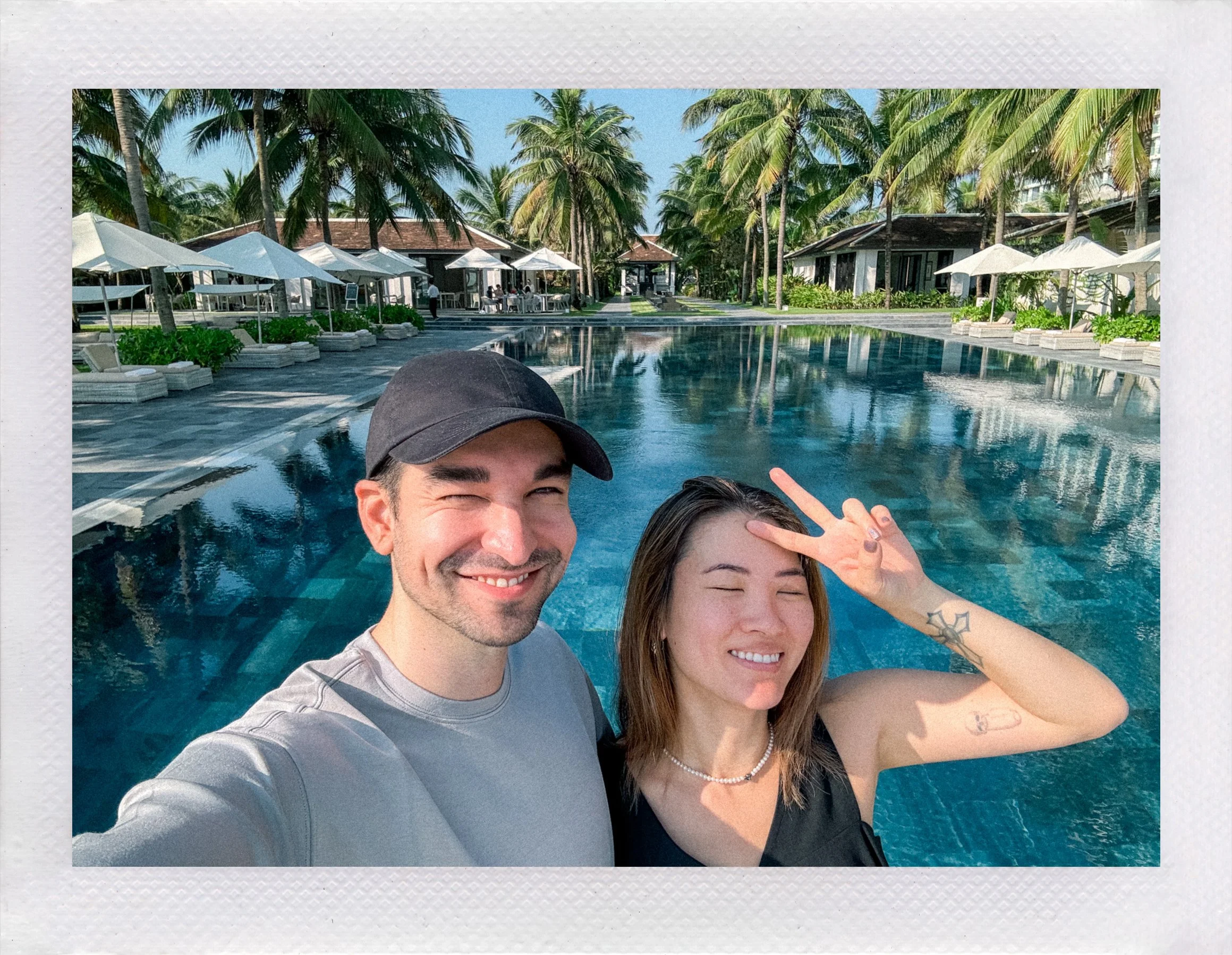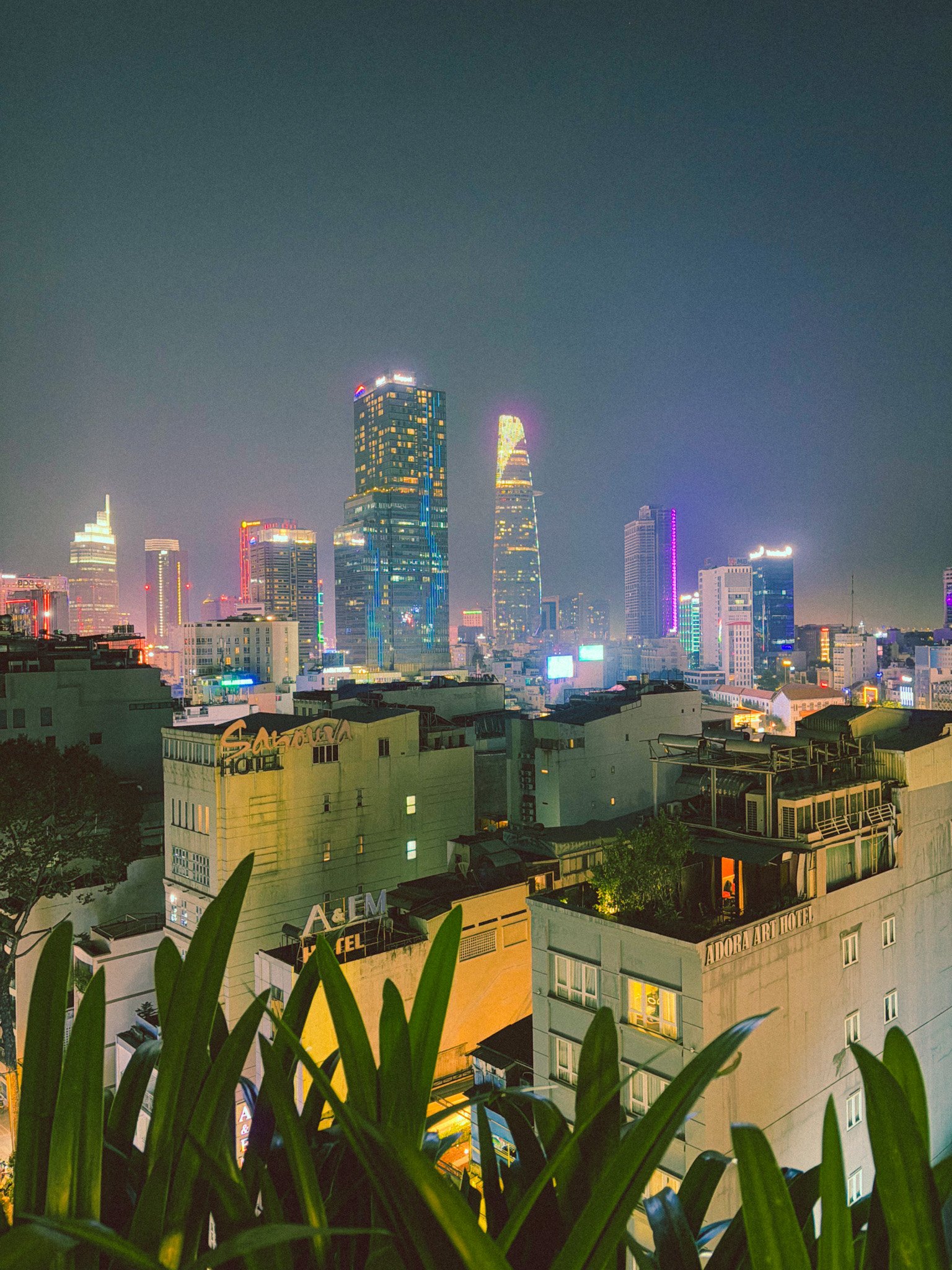Da Nang, Vietnam City Guide
This post contains affiliate links, meaning EVERLASTYING will earn a commission if you purchase through our link at no extra cost.
Read my disclosure for more information. I appreciate your support 🤍
When we landed in Da Nang, I didn’t expect much. I barely knew anything about Vietnamese culture outside of what my friends had shared. But as soon as we got into our Grab (Vietnam’s version of Uber) and drove through lively streets toward our stay at TIA Wellness Resort… it instantly gave Bali energy — in the best way.
Even as the sun was setting, the city felt alive: humid air, glowing food stalls, the sound of scooters, beach-town breezes, and a relaxed mix of tourists and locals wandering the streets.
I had no idea Da Nang was famous for its clean beaches, fresh seafood, and laidback pace. But it’s also got history, easy access to day trips like Hoi An and Hue, and seriously great value for travelers.
In this guide, I’ll walk you through a quick history of Da Nang (spoiler: it’s wild), where to stay and where to book stays, tours and day trips you can easily book, where to explore, tips how to get around, and more!
getting to know Da Nang
Da Nang is Vietnam’s dynamic coastal city with a story as layered as its beautiful landscapes. It’s the country’s 5th largest city and an important port with roots dating back nearly two millennia.
From Ancient Kingdom to Trading Hub
Da Nang’s origins trace back to 192 AD during the ancient Champa Kingdom. Known then as a vital settlement, the city’s strategic position along the Han River made it a natural trading and military spot. The name “Da Nang” itself derives from the Cham word “da nak,” meaning “river source.”
Over centuries, the Cham people faced conflict with the expanding Dai Viet (ancient Vietnamese), leading to territorial shifts by the 15th century when the Cham influence diminished and Vietnamese settlers transformed the region.
Dragon Bridge
Colonial Era and the Rise of Tourane
In the 16th century, Portuguese explorer António de Faria visited the area, opening the door for increased European trade.
By the 19th century, Da Nang — then called Tourane — had surpassed the nearby Hoi An port to become Vietnam’s leading commercial harbor, especially after Emperor Minh Mang’s trade restrictions in 1835 channeled commerce through Da Nang.
However, the city was also a battleground. In 1858, French forces landed in Da Nang during the Cochinchina Campaign, marking the start of French colonial dominance in the region. By 1887, Da Nang was officially under French Indochina rule, growing into one of Vietnam’s five major cities alongside Hanoi and Saigon.
Da Nang During the Vietnam War
Fast forward to the 20th century — Da Nang became a crucial military base during the Vietnam War. The Da Nang International Airport was one of the busiest airbases worldwide, used extensively by U.S. and South Vietnamese forces. The city witnessed major battles and was a pivotal location until the war’s end in 1975.
Today: A Modern City with Deep Roots
Since Vietnam’s reunification, Da Nang has evolved into a thriving urban center that balances modern development with its rich history. Recognized as a first-class city and a major economic hub, it’s now famous for its stunning beaches, cultural landmarks, and proximity to UNESCO World Heritage sites like Hoi An and Hue.
Da Nang map
know before you go!
💬 LANGUAGE
Vietnamese is the official language, but basic English is spoken in touristy spots (hotels, restaurants, tours).
🗣️ HELLO = Xin chào | THANK YOU = Cảm ơn | GOODBYE = Tạm biệt
💰 CURRENCY
Vietnamese Dong (VND) — cash is king at markets and food stalls!
Most hotels and restaurants take credit cards, but always keep small bills on you just in case.
TIPPING
Tipping isn’t expected, but it’s always appreciated. Round up for taxi drivers and leave small change for service staff.
📞 EMERGENCY CONTACTS
Vietnam is safe for travelers, but here’s who to call in case of emergency:
111: Child protection | 112: Life-saving services | 113: Police | 114: Fire | 115: Ambulance/First Aid
🤓 THINGS I WISH I KNEW EARLIER
Always hand or receive money with two hands (it’s polite and respectful)
Outlet type in Vietnam? It’s mostly Type A, C, and F — so regular plugs work, but we had a minor freakout when we thought it was a different fit at our hotel 🫠
best time to visit
☀️ February to May – best overall
Why go: Dry season, beach-ready weather, and fewer crowds
Vibe: Sunny days, breezy nights — perfect for swimming, exploring, and day trips
✅ Book early — this is peak for wellness stays and tours
🔥 June to August — peak tourist season
Why go: Summer season + school holidays
Vibe: Lively, bright, and full of energy (but pricier hotels and more tourists)
🌊 Sea is calm and perfect for water activities
⚠️ Expect high temps, lots of people, and sunscreen shortages lol
🌧️ September to November
Why go: Fewer crowds, off-season hotel deals (we visited in November)
Vibe: Unpredictable weather with tropical downpours and the occasional typhoon
💡 Bring a rain jacket and flexible plans
🌥️ December to January
Why go: Winter months = cooler days and thinner crowds
Vibe: Not quite beach weather, but still comfortable for sightseeing
☁️ Some light rain and overcast skies
getting around
✈️ From Da Nang Airport to the City
🚗 Private Transfer
The most comfortable option, especially after a long flight. Book an English-speaking driver via Daytrip for door-to-door service.
🚕 Grab App (like Uber):
Affordable and widely used — just download the app before landing
🚐 Taxi:
Available at the airport, but prices can vary — agree on a rate first
🛵 Around the City
Grab for short rides
cheap and reliable, though drivers may cancel during rush hours
Motorbike rental for the adventurous
→ Rent via Klook
Biking
Possible along beachfront areas — some hotels offer complimentary bikes!
Walking
Doable in central areas like My Khe Beach and city center, but bring SPF!
💡 TIP
Always double-check the pickup spot in the Grab app —
some hotels and spots have tricky layouts.
tours you might like
where to explore
where to stay
My Top Pick: TIA Wellness Resort
We stayed here for 2 nights and it was everything. Endless spa treatments, healthy meals, creative wellness classes — and just steps from the beach.
🗺️ Best area to stay in Da Nang
My Khe Beach – For peace, palm trees, and seaside cafés (great for wellness resorts + ocean views)
City Center / Han River – Close to markets, bars, Dragon Bridge, and nightlife
Son Tra Peninsula – Best for nature lovers and more secluded luxury stays
— Find Your Perfect Stay —
FAQ
Q: 🗓️ How many days should I spend in Da Nang?
A: 3 – 4 days is ideal!
You’ll want at least 2 full days for Da Nang’s food, beach time, and cultural sights — plus an extra day or two for day trips to Hoi An, Hue, or Ba Na Hills.
→ Jump to Getting Around to plan transfers and drivers.
Q: 🏖️ Are Da Nang beaches clean?
A: Yes — especially My Khe Beach, which is well-maintained and safe to swim in. Expect powdery sand, clear water, and lifeguards at most major beaches.
Q: 💬 Do people speak English in Da Nang?
A: In tourist zones (hotels, restaurants, tour spots), yes — basic English is common.
In more local areas, it’s helpful to download Google Translate or learn a few Vietnamese phrases. A smile goes a long way 😊
→ See Know Before You Go for more tips and key phrases.
Q: ✈️ How do I get from Da Nang Airport to the city?
A: You’ve got options:
Private transfer via Daytrip — super smooth with English-speaking drivers
Grab app (Vietnam’s version of Uber)
Or use local taxis from the terminal — just confirm the fare first
→ Full breakdown in How to Get Around
Q: 🌊 What is Da Nang known for?
A: Da Nang is famous for its:
Clean beaches like My Khe and Non Nuoc
Marble Mountains (epic views + sacred caves)
Street food and seafood culture
Easy access to day trips (Hoi An, Hue, Ba Na Hills)
And its chill beach-town energy that blends nature and city life
→ Learn more in Getting to Know Da Nang
check out my recent travel vlog!
YOU MIGHT ALSO LOVE
Last Updated: 10.17.2025









Ready to climb your way to breathtaking views and ancient wonders? Explore Marble Mountain in Da Nang, where mystical caves glow with Buddha statues, and ancient pagodas sit atop limestone peaks.